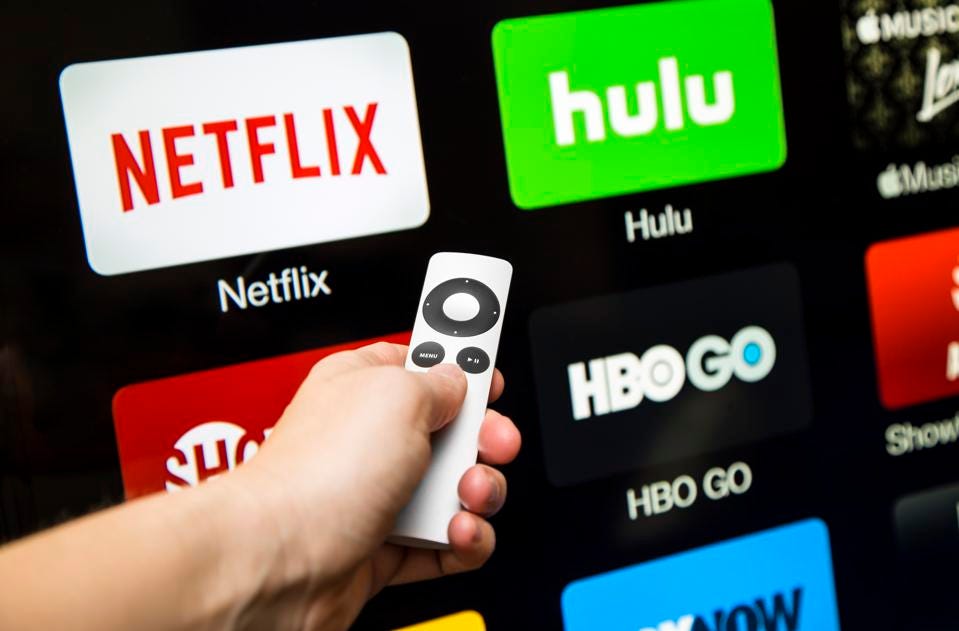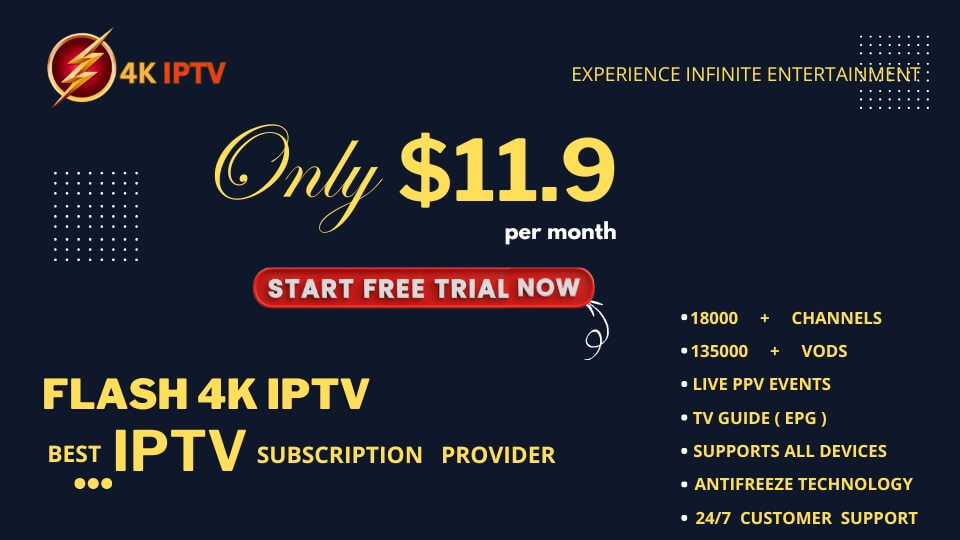If you are an IPTV streamer, then you might have heard the term VOD [Video On Demand] frequently. It is a streaming system that lets you access video content like the latest movies, series, TV shows, and sports events without any schedule like normal cable TV services. For those unaware, we have provided in-depth details of What VOD is, how it works, and the benefits of Video on Demand.
What is VOD and How Does It Work?
Video On Demand [VOD] is a media distribution system that allows users to access entertainment content whenever they wish. It means it has no live streaming or schedule for accessing content. So, you can play, pause, and stop the content at your convenience.

With a good internet connection, VOD can be streamed on smartphones, smart TVs, and all other popular streaming devices. Popular streaming services like Amazon Prime Video, Netflix, Hulu, and even the familiar IPTV services like Gold IPTV and Apollo IPTV deliver Video On Demand content.
You can access VOD content using free and paid streaming services. Here is the procedure of how it works.
1. First, the video content should be in a digital format.
2. Next, it is stored in a video server.
3. The video is compressed and transmitted to the user through the internet or cable.
4. Now, the video is decoded and extracted through the set-top box and stored in the video server of a user’s device.
5. Finally, users can watch the video on their devices.
Merits and Demerits of VOD
Here are the major advantages and disadvantages of video-on-demand.
| Merits | Demerits |
|---|---|
| It lets users stream the latest movies and TV shows conveniently. So, you don’t need to follow a schedule to watch your favorite shows. | It might contain some location-specific content. So, some media content in the video-on-demand library cannot be accessed in your region. |
| It gives you the freedom to watch what you want to watch. You can select your favorite content to watch. | It doesn’t contain any live streams, so you cannot watch popular sports events live on video-on-demand. |
| You can able to pause, rewind, and play the content according to your preference, so you can stream your desired content as many times as you wish. | All the video-on-demand library may not contain the same content. Hence, you need to subscribe to different subscription plans to access the content unavailable in the library you purchased already. |
What is the Difference Between Live Streaming and Video On Demand?
Video On Demand: The primary difference between live streaming and video on demand is how you access the content. The video on demand lets you access the content when you are free as it is pre-recorded and uploaded in the library. Also, it allows you to play, pause, and rewind the content at your convenience.
Additionally, you can access the content whenever you want as long as it is available in the library. The quality of the content is good as it allows creators to make mistakes and correct them before they are uploaded to the VOD library. The VOD streaming can be used for some of the purposes mentioned below.
Customers
- Entertainment
- Detailed demonstration of products
- Educational and informative content
Organization
- Tutorials
- Walk-throughs
- Internal training
Live Streaming: Unlike VOD, you should be available to watch live streaming when it is telecasted. You cannot interact with the content when it is streaming. Sometimes, they may replay the event once the live streaming is over.
The quality of the content may not be as expected as they won’t have time to polish their work. They cannot edit the content when it is live streaming, but they can rehearse the show or event before it starts to provide the best live streaming for the viewers. Live streaming can be used for below-mentioned purposes.
Customers
- For Product releases
- For Product demos
- Press releases
Organization
- To announce the changes in an organization
- Can conduct live training sessions
- To host a conference
Different Video On Demand Models
There are different Video On Demand models available. Here, we have mentioned three types of video-on-demand models.
Advertising Video-On-Demand (AVOD)
Advertising Video-On-Demand is a familiar monetization model. It uses ads to get revenues. The content is free to watch, but your ads interrupt you while streaming. This model generated a good amount of revenue using the large viewer base. The popular AVOD monetization models are YouTube and Daily Motion. The VOD ads are categorized into three categories, as mentioned below.
- Pre-roll- Plays in the beginning
- Mid-roll- Plays in the middle
- Post-roll- Plays in the end
Subscription Video-On-Demand (SVOD)
The Subscription Video On Demand model is the next best monetization model. It provides a large amount of entertainment content with a subscription plan. You can access it only if you subscribe to this service. It lets you access unlimited entertainment content on its video-on-demand library. Amazon Prime, Netflix, and Hulu are the popular SVOD services.
Transactional Video-On-Demand (TVOD)
Transactional Video-On-Demand is the pay-per-view monetization model. This model is suited for the most popular videos with small video libraries. You need to pay some amount for certain content for a limited time. TVOD model is categorized into two different categories: Electronic Sell Through (EST) and Download to Rent (DTR).
Benefits of Using Video On Demand for Business
Video On Demand provides enhanced streaming for users and also gives creators enough time to create their content and release it at the right time. Here are the benefits of using VOD for business in 2023.
- Online Community and Passion: It gives creators a chance to grow their community around their content and the industry they wish. If most viewers like the content, then it will increase your business.
- Income: You must create a subscription-based video streaming platform with a regular income. If you provide interesting content, your viewer base will increase. Also, users will keep subscribing to your premium service.
- Convenience: It gives users a convenient streaming experience. You can watch the content at anywhere and anytime with the required internet connection on your device, and there are no restrictions. You can also stop streaming content and resume playing it whenever you wish.
- Ad-Free Streaming: Ads between streaming will irritate users while streaming. So, to get ad-free streaming, users will subscribe to the premium service.
- More Customers and Accessibility: You need to create a unique platform that can be used on different streaming devices. Users must log in to their accounts and access their favorite videos directly.
Tips to Get Started with Video On Demand
VOD is becoming one of the best business strategies nowadays as it gives more profit. If you want to start with Video on Demand, you can consider the things mentioned below.
- Select Video On Demand Model: First, you need to select the model of your Video On Demand platform to get revenue, such as AVOD, SVOD, and TVOD. It is the main source of income.
- Provide Unique Video Collection: As there are a lot of streaming services available, you need to provide unique and popular content to attract viewers.
- Create an App and Own Website: The popular streaming services with VOD has a native application and a website. So, you need to create a website and app to access your service easily.
- Update Content Regularly: To keep your viewers engaged and make the users subscribe to your service, you need to provide or update new content regularly. So that users can stream their desired content.
- Promotion: Although you provide the latest content, you need to promote your service on various platforms like Facebook and Instagram using spreadlinks and posters.
FAQ
VOD provides the latest entertainment content, whereas OTT broadcasts live videos on the internet.
YouTube is a VOD platform that lets you stream content according to your wishes whenever you want.
Yes. Amazon Prime Video is the Transactional Video On Demand (VOD) model.
![What is Video On Demand [VOD] in IPTV Streaming & How Does It Work? What is VOD [Video On Demand]](https://iptvtester.com/wp-content/uploads/2024/05/What-is-VOD-Video-On-Demand-768x499.png)
